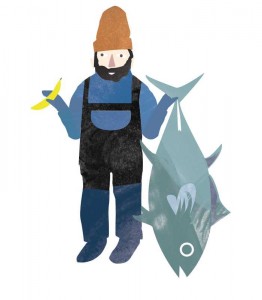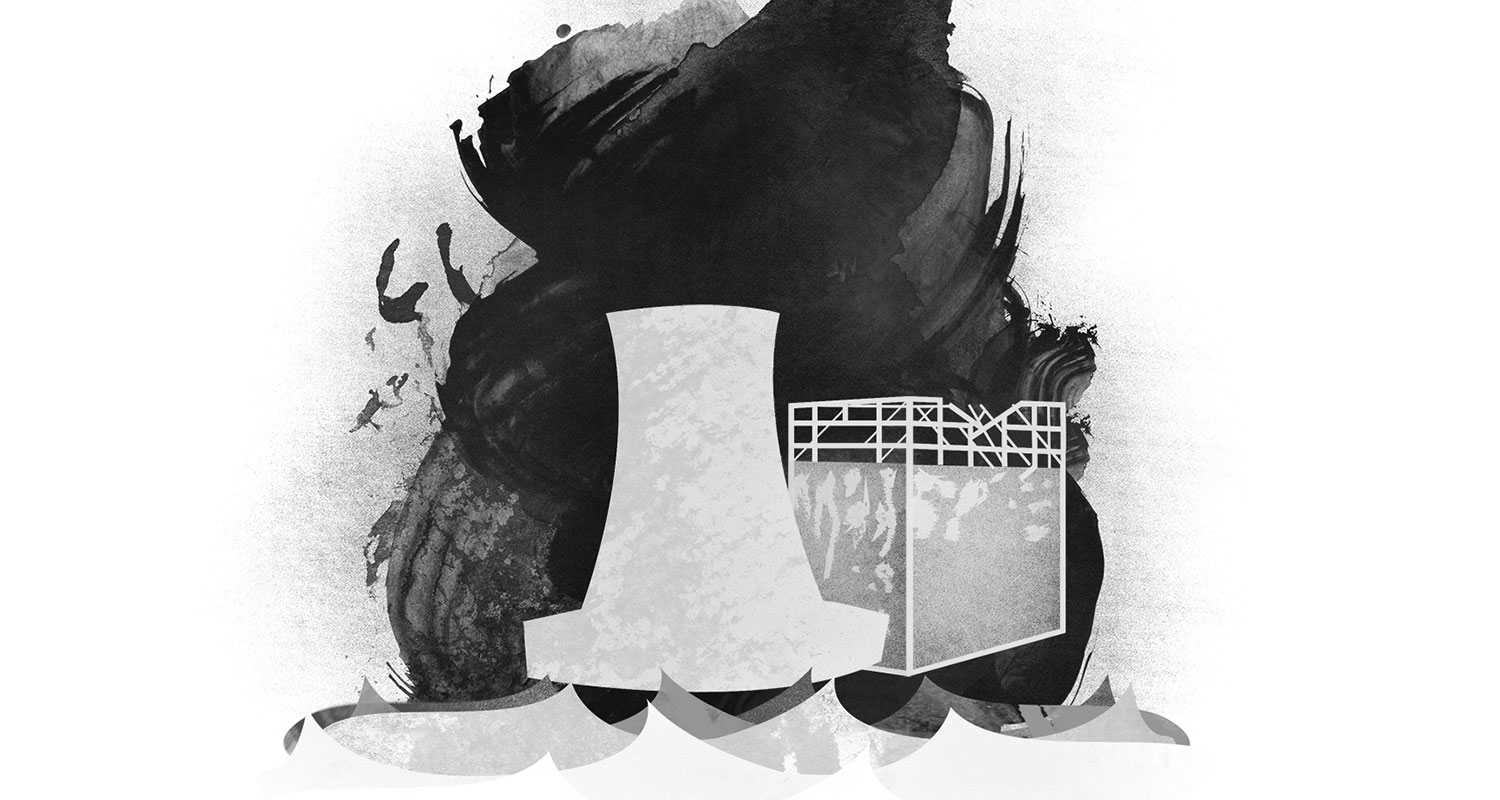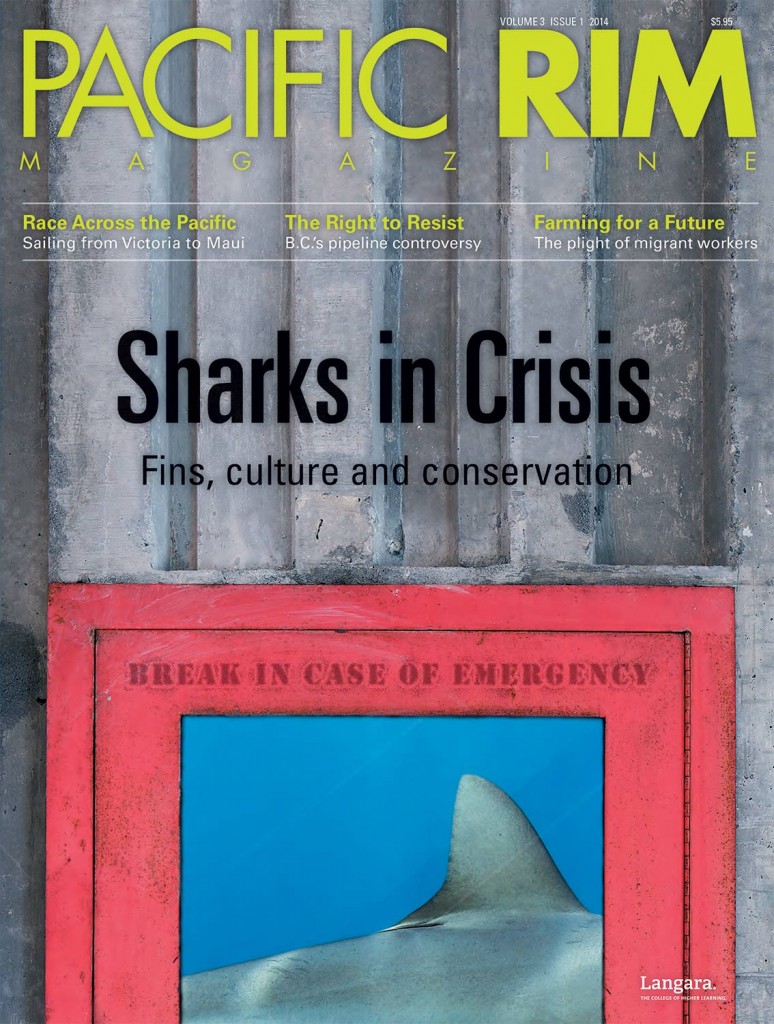On March 11, 2011, the 9.0-magnitude Great Tohoku Earthquake rocked Japan’s Honshu Island. The resulting tsunami—with waves reaching as high as 39 metres—washed over Honshu’s eastern coastline. Approximately 18,500 people died as a result. In the northeastern Tohoku region, the destruction wrought by the earthquake and subsequent wave triggered a cooling system failure and meltdown at the Fukushima Daiichi Nuclear Power Plant. Three years later, the plant continues to leak radiation.
As of 2014 there has been little radioactive contamination and only slightly raised levels of cesium-137 in the ocean (the radioactive element that was released into the ocean from the Daiichi Power Plant). In November 2013, Jay T. Cullen, an associate professor and marine chemist at the University of Victoria, stated that the radiation drops to two percent 600 metres off the shore from Fukushima. That level is expected to decrease as the radiation flows into the Pacific Ocean.
“For me, the biggest fallout from this nuclear accident is the socio-economic impact to local [Japanese] communities and fisheries,” says Wilf Swartz, a marine biologist at the University of British Columbia. Swartz’s connection to Fukushima is personal. He spent most of his childhood in Japan and has taken a keen interest in helping the Japanese fishing community get back on its feet.
Although radiation tests indicate that seafood is safe for consumption, most residents in the West are still wary to eat it. According to Swartz, since the disaster sales of fish from Japan have decreased as fear of radioactive contamination has scared off consumers. Prices have been lowered in an attempt to coax buyers.

According to an American study issued by the Proceedings of the National Academy of Sciences (PNAS), a scientific journal that is widely read and highly regarded by scientists, the only animals shown to contain trace radiation are a few species in Fukushima, including one type of butterfly, plankton, and the Pacific bluefin tuna. The study found that if you were to eat the same amount of fish that a recreational fisherman would likely ingest in a year (which is roughly five times more than the average American citizen eats), your radiation exposure would be equivalent to “12 percent of the dose received from the cosmic rays during a transcontinental flight from Los Angeles to New York.” A 200-gram serving of Pacific bluefin tuna from Japan contains about five percent of the radiation present in one uncontaminated banana. According to PNAS, concerns surrounding fish in the Fukushima area stem from “fears regarding environmental radioactivity, often a legacy of Cold War activities and distrust of governmental and scientific authorities [which] have resulted in perception of risks by the public that are not commensurate with actual risks.”
Scientists from the Woods Hole Oceanographic Institution and the Center for Marine and Environmental Radiation have launched a crowdfunding campaign to fund citizen water testing along the West Coast—all the way from Alaska to Costa Rica. The campaign, Our Radioactive Ocean, has been posting the results found by its citizen scientists online. On January 28, 2014 they stated that samples taken from California and Washington showed no detectable signs of cesium. According to Canada’s Bedford Institute, trace amounts of cesium have been detected off of Vancouver’s coast, however, at levels far below drinking water safety standards.
The latest cause for concern surrounding the Daiichi plant is that the water accumulated in the process of cooling the reactors has become radiated. Currently over 436,000 tonnes of water are being held within 1,200 tanks, and questions are being raised as to how the Tokyo Electric Power Company (TEPCO) is planning to deal with the ever growing volume.
TEPCO is currently using an Advanced Liquid Processing System to remove toxins from the radiated water. Dale Klein, former chairman of the United States Nuclear Regulatory Commission, has suggested that the best approach would be to treat the water and then safely release it back into the ocean. The proposal has been met with criticism and TEPCO has not officially declared how they dispose of, or store, the radiated water. However, the company has advanced with the construction of a EUR 290 million underground ice-wall project that, in theory, will prevent additional water from flowing into or out of the plant.
Despite the logistical challenges posed by ongoing radiation clean up efforts, the radiation itself has yet to be officially linked to any deaths (as of March 2014). While this does not negate the possibility of future complications, studies thus far conclude that ecosystems and human life have not been greatly impacted by the Fukushima Daiichi event.











